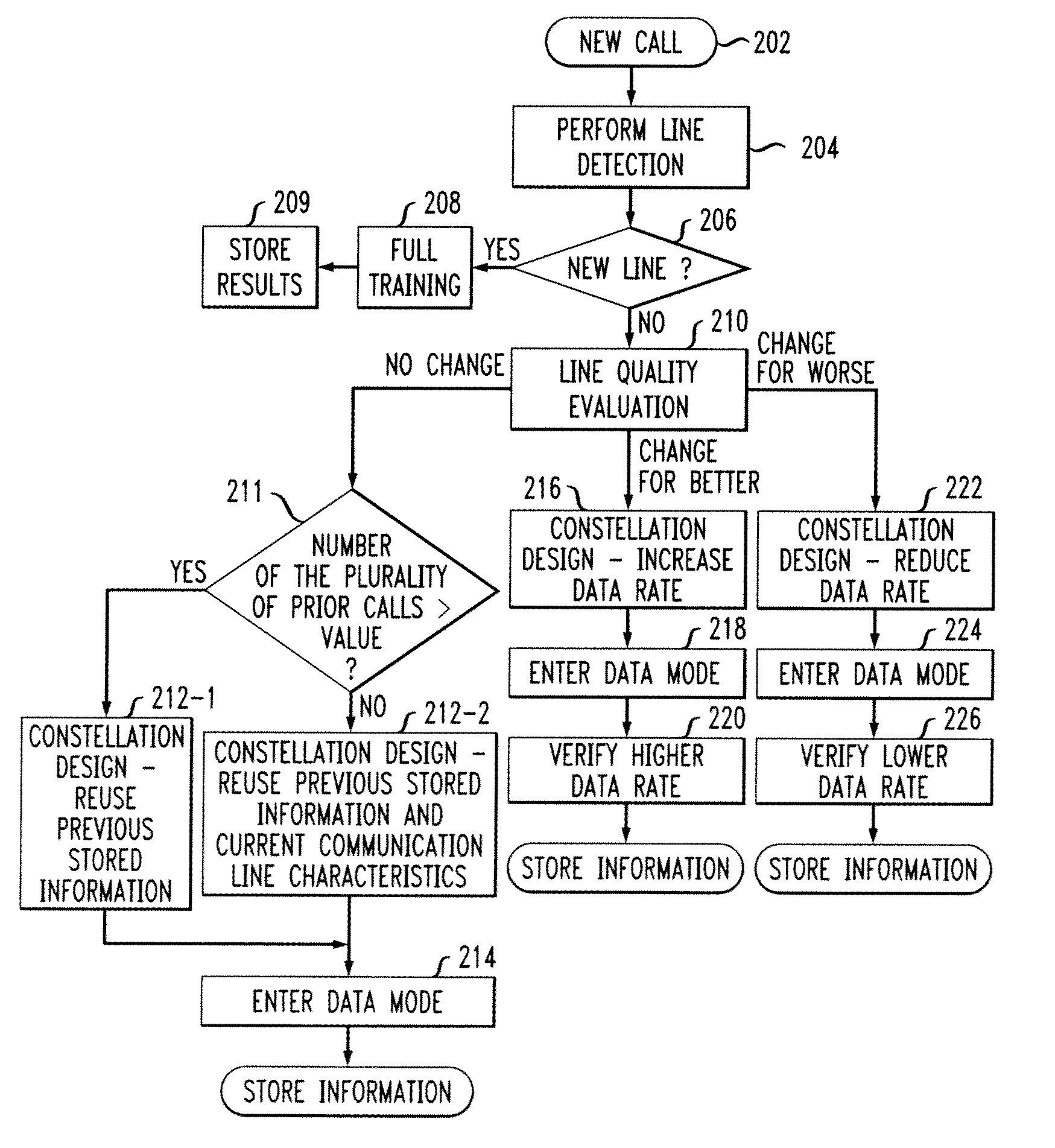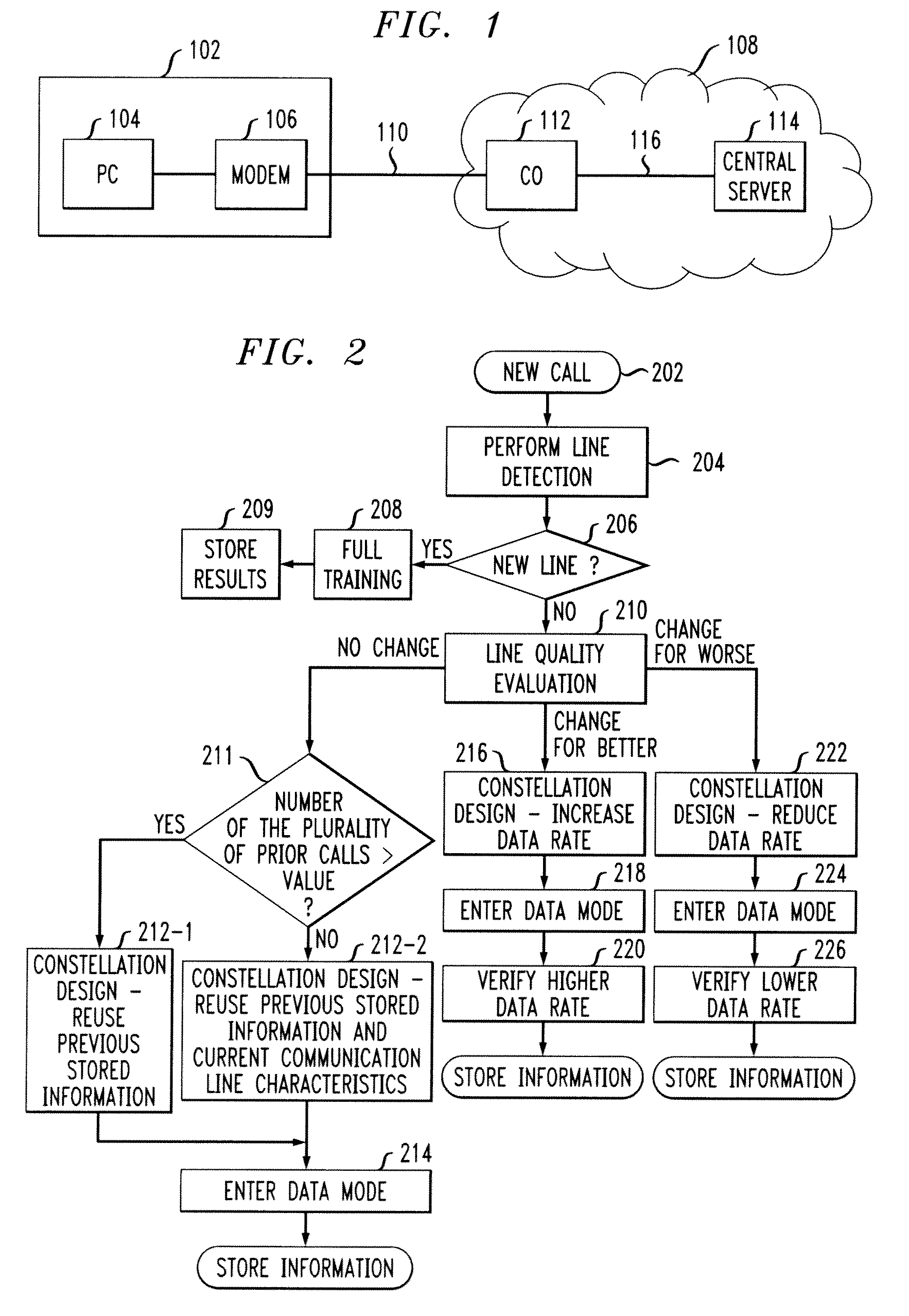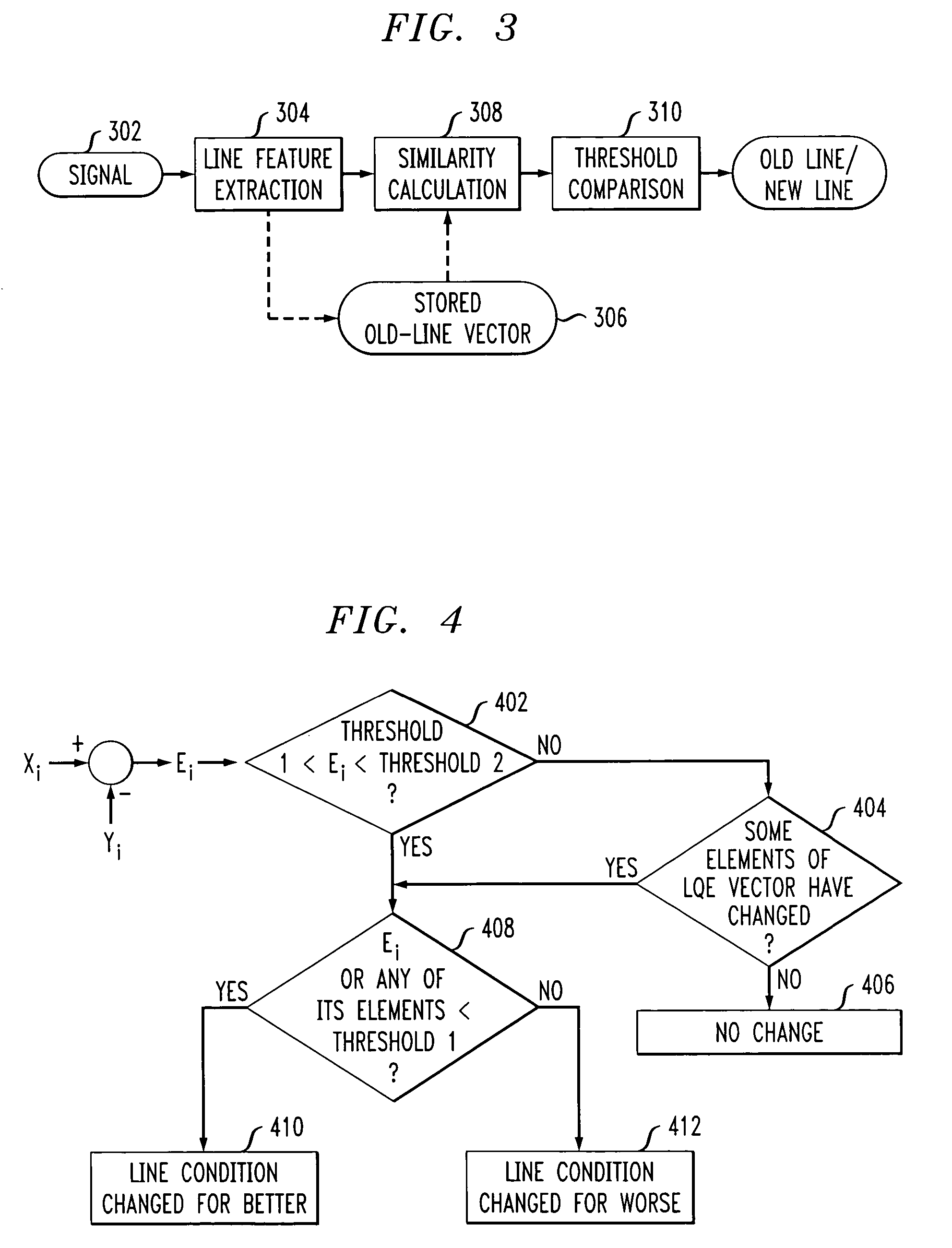Adaptive modem
a modem and modem technology, applied in the field of data communication, can solve the problems of difficult estimation of data mode mse based only on training data, time-consuming training procedures, and low data rate, and achieve the effects of improving the speed of training, improving the constellation design, and improving the performance of the modem for subsequence calls
- Summary
- Abstract
- Description
- Claims
- Application Information
AI Technical Summary
Benefits of technology
Problems solved by technology
Method used
Image
Examples
Embodiment Construction
[0020]FIG. 1 shows an exemplary network in which the principles of the present invention may be advantageously implemented. A customer premises 102 includes a personal computer (PC) 104 and a modem 106. PC 104 may be any type of well known computer comprising a processor, memory, data storage, and user input / output devices. As is well known, a PC operates under control of computer software which defines the overall operation of the computer. PCs are well known in the art and will not be described in detail herein. PC 104 may include an internal or external modem, such as modem 106. In FIG. 1, modem 106 is shown as an external modem for ease of reference only. In many advantageous embodiments, modem 106 would be internal to PC 102. In an advantageous embodiment, modem 106 operates in accordance with the ITU V.90 / V.92 standard. The present detailed description will describe the functions performed by a modem in accordance with the principles of the present invention. One skilled in th...
PUM
 Login to View More
Login to View More Abstract
Description
Claims
Application Information
 Login to View More
Login to View More - R&D
- Intellectual Property
- Life Sciences
- Materials
- Tech Scout
- Unparalleled Data Quality
- Higher Quality Content
- 60% Fewer Hallucinations
Browse by: Latest US Patents, China's latest patents, Technical Efficacy Thesaurus, Application Domain, Technology Topic, Popular Technical Reports.
© 2025 PatSnap. All rights reserved.Legal|Privacy policy|Modern Slavery Act Transparency Statement|Sitemap|About US| Contact US: help@patsnap.com



